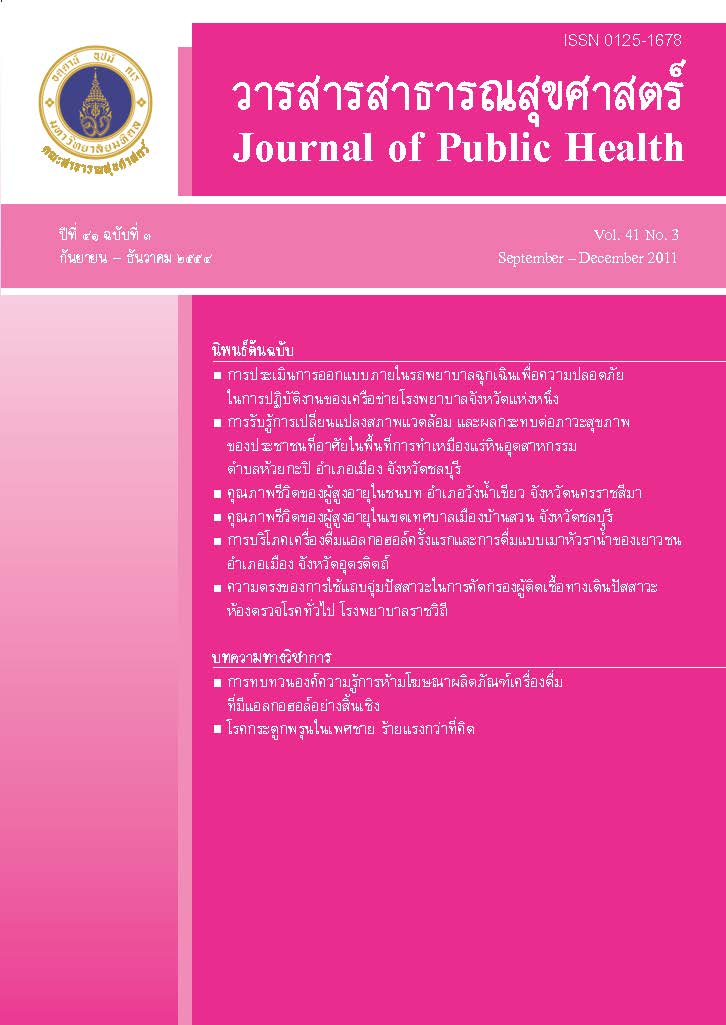Bacterial Contamination in Raw Shucked Oysters in Shucking Houses and Retail Shops in Chon Buri Province,Thailand
Keywords:
Bacterial contamination, Oyster, Food safety, การปนเปื้อนแบคทีเรีย, หอยนางรม, ความปลอดภัยอาหารAbstract
ABSTRACT
Oysters may be cross-contaminated with bacteria from an unsanitary shucking process and sale. Hence the aims of this study were to compare bacterial contamination in samples of shucked oysters from aseptic shucking, in shucking houses, and in retail shops in Chon Buri Province, and to investigate bacterial contamination in samples from surface areas of equipment, the fresh water used in the shucking process, and oysters processed for sale. Analysis of variance was performed after a logarithmic transformation of bacterial counts was conducted. The results revealed that counts of total bacteria, Staphylococcus aureus, and fecal coliforms in aseptically shucked oysters, were significantly lower than those same measurements in freshly-shucked oysters (p < 0.01, = 0.01, < 0.01, respectively) and in packed-shucked oysters (p < 0.01, < 0.01, < 0.01, respectively). About 90-100% of the shucking equipment was contaminated with total bacterial counts higher than acceptable limits, both before and during use. Fresh water exceeded the standards for total bacteria and coliforms in all samples, both before and after washing. The 40% of unwashed and 50% of washed shucked oysters exceeded the standard for total bacteria.
The results indicated that bacterial contamination in these samples may be a consequence of unsanitary cleaning, storage, and handling of equipment and fresh water, including improper temperature controls during oyster processing and sale.
Key words: Bacterial contamination, Oyster, Food safety
Downloads
Issue
Section
License
Creative Commons License CC-BY-ND


